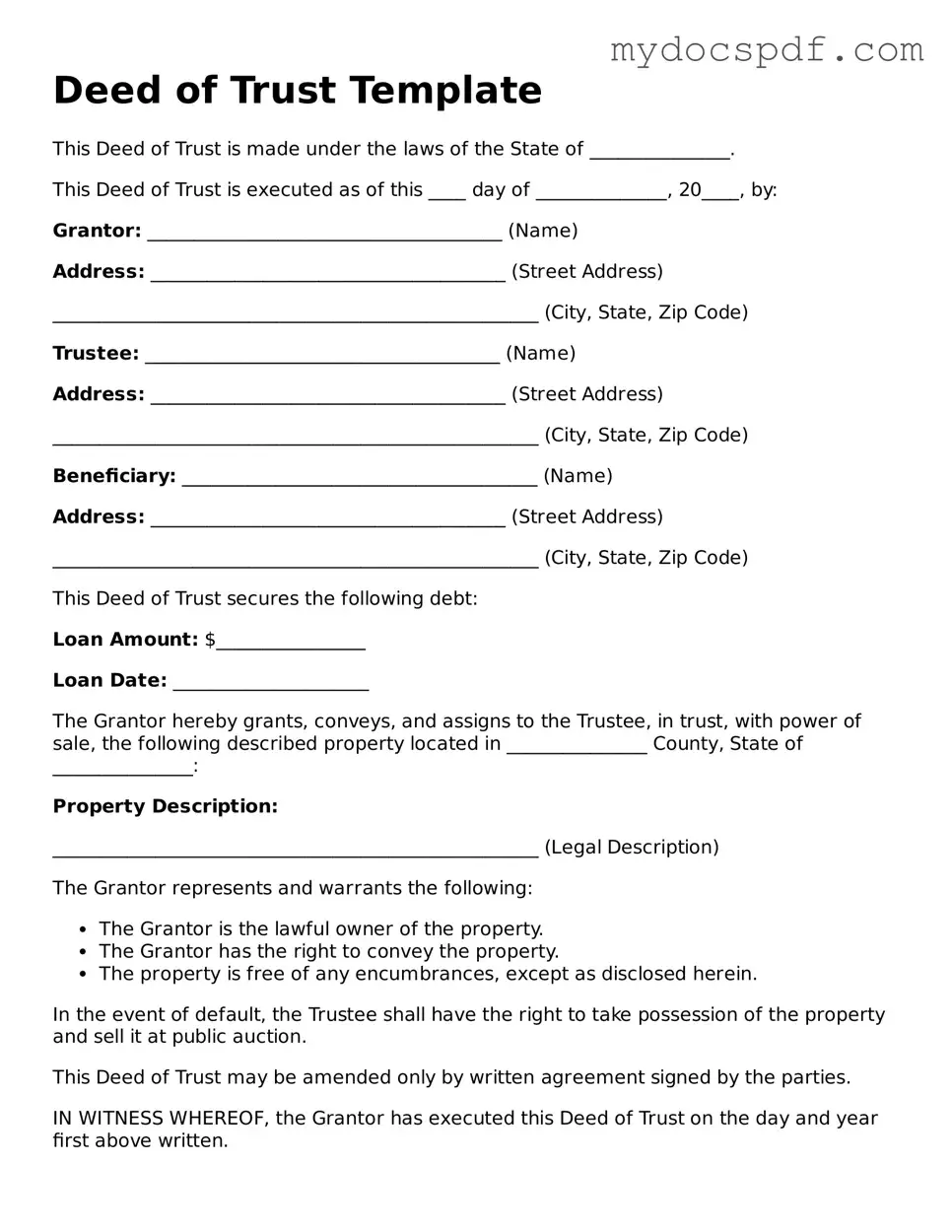Deed of Trust Template
This Deed of Trust is made under the laws of the State of _______________.
This Deed of Trust is executed as of this ____ day of ______________, 20____, by:
Grantor: ______________________________________ (Name)
Address: ______________________________________ (Street Address)
____________________________________________________ (City, State, Zip Code)
Trustee: ______________________________________ (Name)
Address: ______________________________________ (Street Address)
____________________________________________________ (City, State, Zip Code)
Beneficiary: ______________________________________ (Name)
Address: ______________________________________ (Street Address)
____________________________________________________ (City, State, Zip Code)
This Deed of Trust secures the following debt:
Loan Amount: $________________
Loan Date: _____________________
The Grantor hereby grants, conveys, and assigns to the Trustee, in trust, with power of sale, the following described property located in _______________ County, State of _______________:
Property Description:
____________________________________________________ (Legal Description)
The Grantor represents and warrants the following:
- The Grantor is the lawful owner of the property.
- The Grantor has the right to convey the property.
- The property is free of any encumbrances, except as disclosed herein.
In the event of default, the Trustee shall have the right to take possession of the property and sell it at public auction.
This Deed of Trust may be amended only by written agreement signed by the parties.
IN WITNESS WHEREOF, the Grantor has executed this Deed of Trust on the day and year first above written.
Grantor's Signature: ___________________________
Date: ___________________________
Trustee's Signature: ___________________________
Date: ___________________________
Beneficiary's Signature: ___________________________
Date: ___________________________
Notary Public:
State of ______________, County of ______________
Subscribed and sworn to before me on this ____ day of ______________, 20____.
Notary Signature: ___________________________
My Commission Expires: ___________________________
